Whether you are just starting out as a painter, or you are a seasoned artist who feels like it’s time to shake up your gear a bit, the following information might be helpful. Art students I have worked with often ask me which paint box, or outdoor easel, they should purchase. It’s a difficult question to answer, with all of the choices out there. In addition to that, the seriousness of the individual asking the question is a factor that often comes into play. In my plein air workshops I can usually figure that the student is serious enough to get some quality gear, and is willing to spend the money for something that is worth the investment.
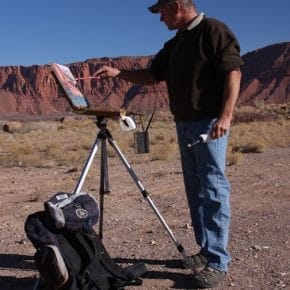
On the other hand, in my college painting classes, some students are occasionally there just to get an elective credit and may not even paint again after the semester is over. For this reason, coupled with the fact that many college students are getting by on a budget, I will sometimes recommend a less expensive rig, like a cheap easel that will do the job, while possibly providing some inspiration for them to want to get more serious about painting later on. There are many paint boxes, easels, and pochade systems on the market today, and I’ve decided to feature the best ones that I am familiar with. If you know of some additional quality options, please feel free to leave a comment at the bottom of this post.
Paint boxes come in a lot of shapes and sizes. They have been around for a long time, and over the years, innovations and improvements have been made to make the job of the plein air painter more practical and enjoyable. Let’s start with the basic box, usually in 12 x 16-inch or 16 x 20-inch sizes, with a lid containing slots for panels. With the smaller size, artists in the past would typically sit out in the field on a stool with the box handle fastened to a belt or rope around the waist and paint away. (Not exactly the most convenient way to work, but it got the job done). The alternative was to mount the canvas or panel on an easel, which would require the painter to bend down to the ground whenever a tube of paint or brush was needed. This system certainly works, but after a while back strain can begin to take its toll!
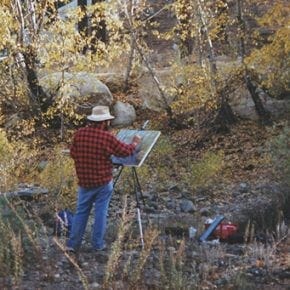
This situation was remedied by further innovation in the form of the Gloucester or Anderson Easel, which is still in production today in a newer version called the Take-it-Easel, and retails somewhere around $360. This easel has a good wide base that can more than handle the task of very large canvases. It was designed to accommodate the 16 x 20-inch box that was then mounted on the easel platform. This eliminated the need of constant bending and the accompanying back problems. This particular configuration was used in New England quite a bit, which enabled artists like Edward Redfield, Aldro Hibbard, Anthony Thieme, and Emile Gruppe to execute larger paintings in the field while standing. It was invented by Oscar Anderson, so the names Gloucester or Anderson became interchangeable.
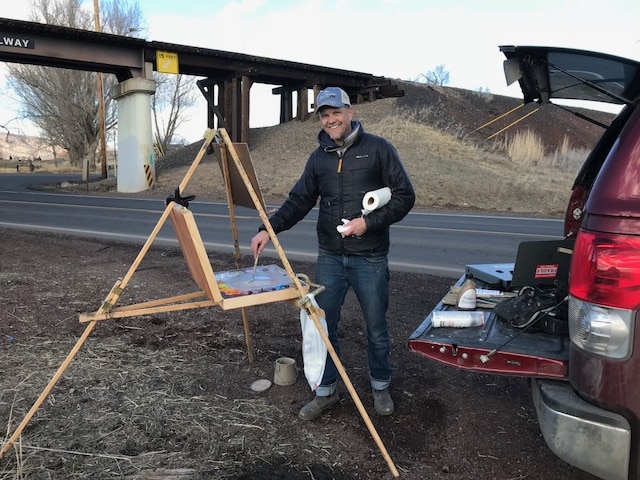
During World War II, a French prisoner of war named Roger Jullian invented the Jullian Easel. This rig combined the easel with the box, making it a lot more convenient out in the field. Today, there are several different varieties, including the full box and the half box. This is an excellent way to go with the added feature of portability, off the ground workstation.
There are several knock-offs to the Jullian, but I would suggest that if you are considering one of these, you stick to the brand name. Besides being a great box, the Jullian is also inexpensively priced and can handle small to mid-sized canvases. Since both can be used on a table without extending the legs, they are also good for the classroom or studio, and can be purchased at many art supply stores, as well as online. I have both the Julian full box and the Julian half box, which I purchased years ago and occasionally still use when the need arises with great results. Here are two more friends who have them. Retail, around $275.
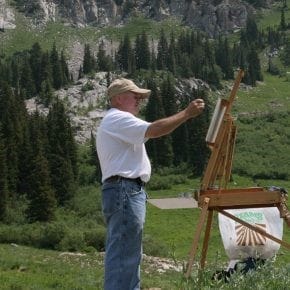
A variation on this idea is the Russian easel. These always remind me of the French easel turned backwards, which means always having the back leg right in the area where you want to stand. I’ve never been impressed with the arrangement, but some like it. I’m not really sure how long the Russian easel has been around, but I have seen at least one photo of an artist using it sometime in the 1930s or 1940s.
Another more recent innovation came in the form of the Open Box M, which is a great design and very practical for smaller sized paintings up to 12 x 16 inches or so. They have a variety of pochade boxes and several different configurations of palette/panel holders that fit on the Manfrotto Easel. When this box came along it was a real game changer, and is now a standard fixture for location painting. I have had the 10 x 12-inch version for years and love it, especially for backpacking and travel. You can even order one of these with a waterproof Pelican box that can go just about anywhere, including rafting trips in Alaska, which I have done.
To save your back from bending over to pick up paint and brushes, there is a brush and palette knife holder that can be mounted to the palette. I use two Nalgene bottle insulators to hold my brushes, but they make brass ones you can buy. There is also a Tripod Apron, which can be mounted to your easel to store your other gear as well. The Open Box M is a little pricier than the Jullian, but well worth the expense in my opinion. The 10 x 12-inch Palette/Panel and Pelican box combo is around $382 retail. The Manfrotto is another $245, according to the website, so you are into the $600 range when all is said and done. But as I’ve indicated, I don’t think you will regret it one bit!
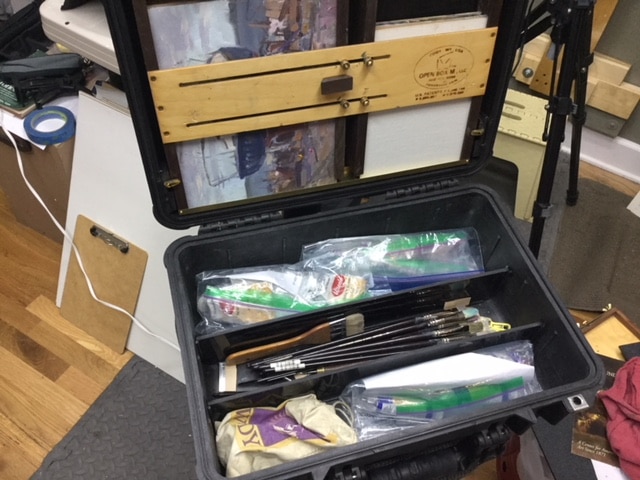
The next easel/box is the Soltek, invented by artist Jim Wilcox of the Wilcox Gallery in Jackson Hole, Wyoming. This one has made quite an impact on the plein air community since its inception. I don’t own a Soltek, but many of my students do and all tell me that they love it! Like the French Easel, it is good for either indoor or outdoor work, has an off-the-ground workstation, slim design for backpacking. It’s also lightweight and extremely portable. In addition to that, another great feature is that the Soltek will take small to large canvases for working in the studio or out on location! I would have to say from what I have seen, this box is a winner that is well worth the price! The Soltek sells for around $500.
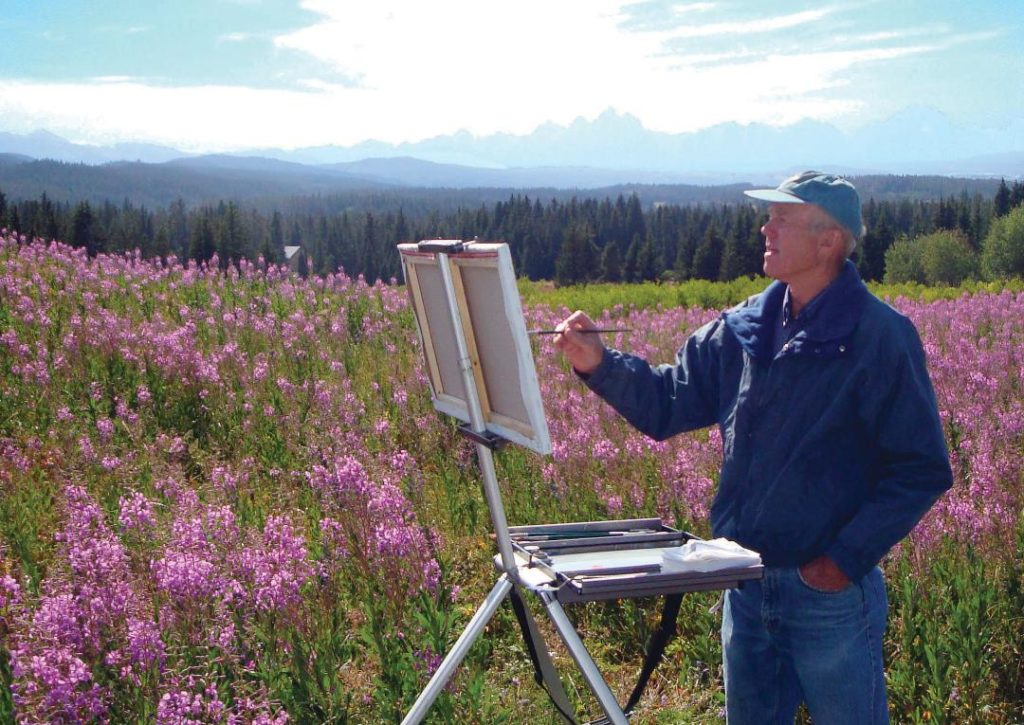
Another great easel is the Coulter Plein Air System, produced by the Art Box and Panel Company. It has a simple, unique design that has been around for a number of years, but is only advertised through word of mouth and on the internet. The Coulter is lightweight and uses an innovative palette/panel holder that mounts on to a tripod, which makes bending over to pick up supplies unnecessary. Retail around $305 plus shipping.
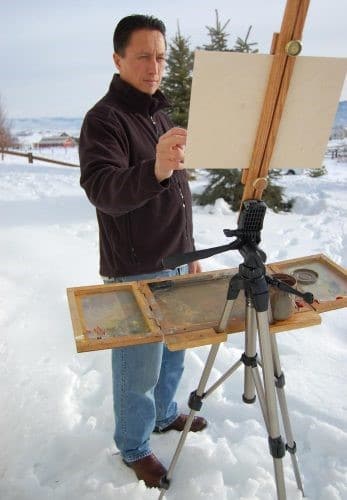
The next box in the lineup is the Yellowstone Lite, 2-panel lid, Pochade box, invented by Ben Haggett of Alla Prima Pochade®, LLC of Missoula, MT. The Lite boxes are thinner and lighter with detachable work trays instead of storage drawers of the Standard Pochade boxes. The Lite boxes come in either a 2-panel or 4-panel lid option. Retail price for the Yellowstone Lite pochade box, around $367.
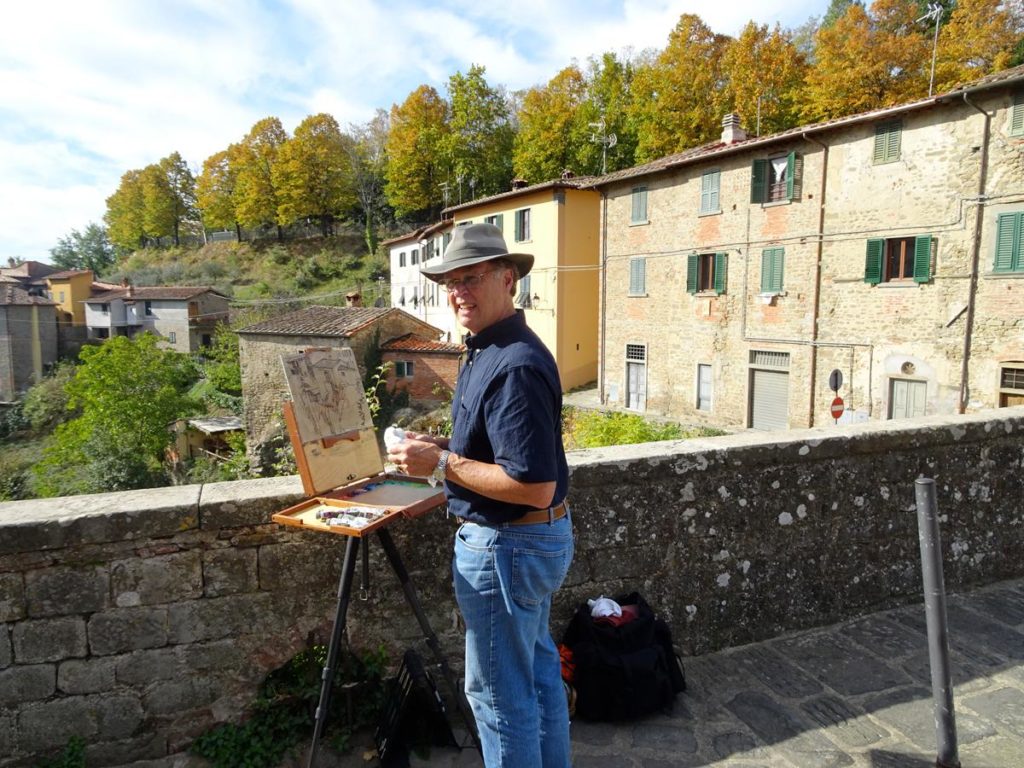
Last, but not least, is the Strada Easel, which has recently taken the plein air community by storm. Created by artist Bryan Mark Taylor as a “go-anywhere” box that is impervious to mishandling by the airlines, it’s a system that is well worth the expense for artists of all ability levels. The Strada Easel is made from high quality aluminum metal. With fewer than half the parts of more complicated and fragile wooden easels and pochades on the market today, there is less to break down and wear out. It is a simpler, stronger, thinner, portable box easel with a patented self-locking component.
The Strada Easel has only one adjustable hand screw, uses two-position control hinges to hold the box open at any angle, and has a simplified tripod attachment. These features reduce weight and setup time. Furthermore, there are no parts that protrude from the sides, top and bottom surfaces, making it easier to slip in and out of a backpack or carrying case. The Strada Easel allows you to store two side trays in the box, keeping everything nice and compact when you travel. The Strada Easel comes in several sizes and prices vary between $535 and $580. Again, I don’t own one, but know people who do and they love it.
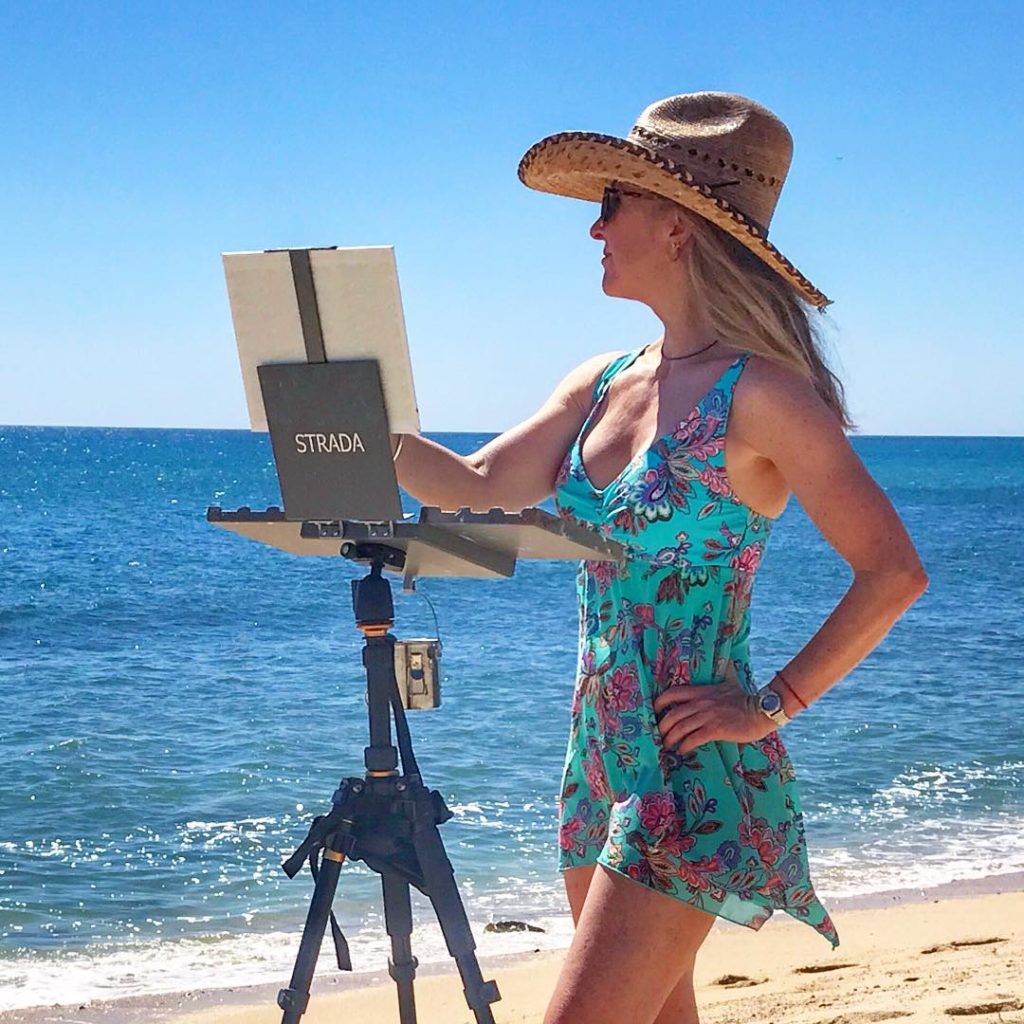
Of course, if you are good with woodworking and have the tools to do it, there is nothing wrong with making your own paint boxes and easels to suit your personal needs. I started out years ago by making my own equipment and I still have several of these boxes in my collection, including my studio easel and another box I currently use outdoors. A few years ago, I was looking for a 6 x 8-inch pochade box for hiking, but wasn’t really thrilled with the prospect of making another one. Luckily, I was able to make an art trade with another friend, artist Paul Kay, to build one for me like he made for himself. It’s been a great addition to my collection of gear and something I use whenever the occasion arises.
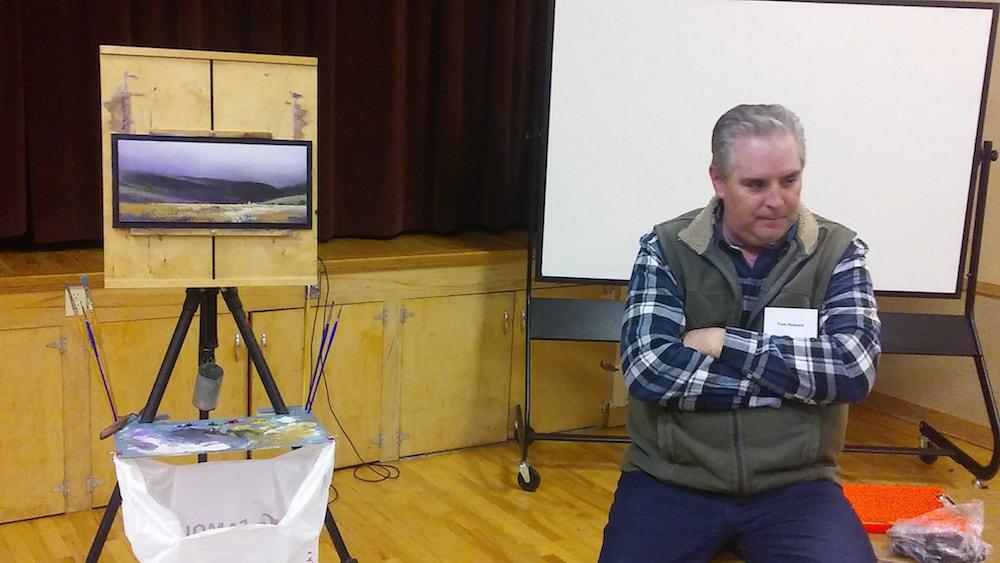
As you can see, there are a lot of possibilities out there depending on your personal preference and financial situation. The list of easel/boxes I presented here is not complete, but reflect the ones I have been most impressed with over the years. If you are still not convinced about what would work best for you, talk to other artists and see how they like their equipment or try googling “pochade boxes” or “paint boxes” and see what comes up. There is sure to be something out there for every taste.
Until next time, enjoy your plein air and studio painting.
Like this? Click here to subscribe to PleinAir Today,
from the publishers of PleinAir Magazine.

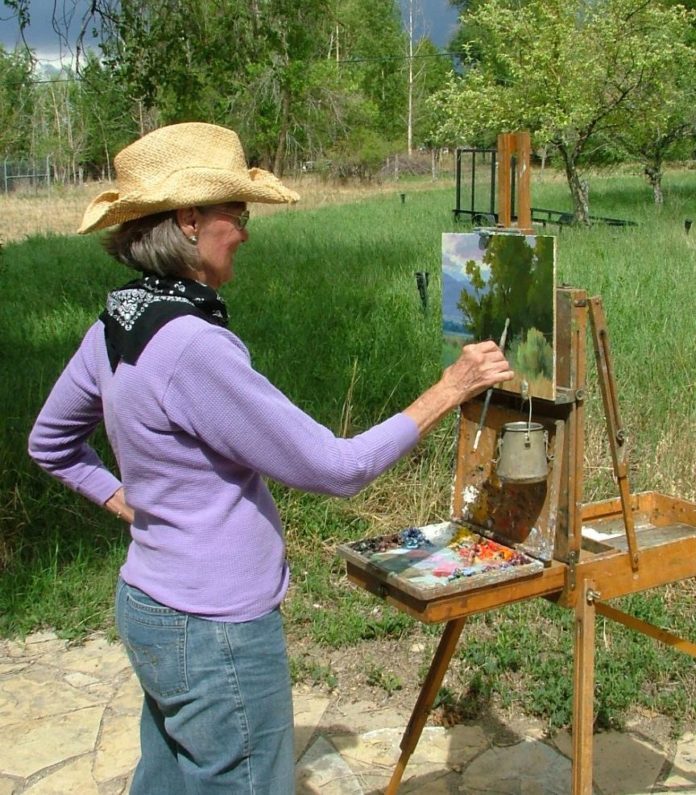
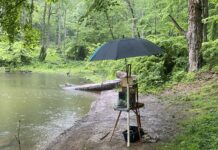


Interesting article, for advanced or want to be professional artists. Wouldn’t it be interesting to know how many present day artists there are, that had taken an art class years ago ‘for credit’, but because of the seeds planted in those classes are now painting or drawing? Painting in a swim suit? The sand files alone would be enough drive one crazy. Not to mention the first, and possibly second degree, burns she would have gotten from the reflected sun off the water, really?
I started taking oil painting lessons along with my wife in 2007. When our instructor introduced us to Plein Air and Pochade painting it seemed to be something I might really enjoy. Did research on equipment. I just wasn’t willing to spend $200, or more, on something I might not be suited for, or enjoy that much. So I made myself one out of an empty cigar box. In fact one of mine was featured in an article in the January issue of this magazine. There is a ton of information on the web, wetcanvas and youtube, about making an entry level box.
EASyL by Artwork Essentials makes many good plein air all-in-one pochade designs plus accessories. http://www.artworkessentials.com
I first came across this article while doing some research about what people have been using for plein air painting. It’s of special interest to me as I have developed an easel/palette holder kit that I have just begun to market. I contacted Mr. Hughes and provided him with a link to my website and asked if he would give me feedback on my product since he has demonstrated insight and experience about a variety of easels available in his article. Mr. Hughe’s positive feedback was greatly appreciated especially his mention that my product would certainly have been included in the article had he known of its existence at the time of its writing. I am including a link to my website for anyone interested in viewing the LederEasel kit, and hopefully, include it in their consideration when making a purchase. Please visit http://www.ledereasel.com and drop me a line with your thoughts.
Thanks for posting this Ed.
I like your easel set up and certainly would have included it in the article.
Best of luck, you are sure to do well with this innovative design!
John Hughes-
I bought a UGO which is about as big as a laptop. It clips on to my husbands tripod which he surrendered. I bought an accessory tray and extender to do larger canvasses althogh I don’t usually go up to 18 by 24 from life. The problem is that it is so beautifully designed I don’t want to ruin its pristine state. It uses magnets for attachments. One great feature is extra strurdy hinges. I have had them break on my backpacker easel. I believe this design belongs at MOMA.
Love this article! I plein air oil and watercolor paint. What is a good way to keep your wet paint brushes organized when working outdoors? I have a tough time keeping myself from becoming the canvas with all the art brush juggling going on.
Hi Roberta and Kelly, Thanks for your contributions to this article. Hope your painting journeys are going well!
In 2007 my wife and I started taking painting lessons at a local store. When the instructor introduced us to Pochades and Plein Air, I thought this I will really enjoy. Old age has taught me not to dive into the deep end until I know how to swim. After a lot of research/pricing and reading how Monet used a cigar box, I opted to try that. One of them was featured in the February issue of Plein Air Magazine. As 9 x 12 is my prefered size to paint on, these have worked great. They are small enough to carry in our backpack. We set on our Mopeds and paint with them. Someday I’ll buy a larger professionally made Plein Air setup, maybe.
I use one modest Podolsk easel model, that is very flexible, portable studio for plainair alla prima paintings.